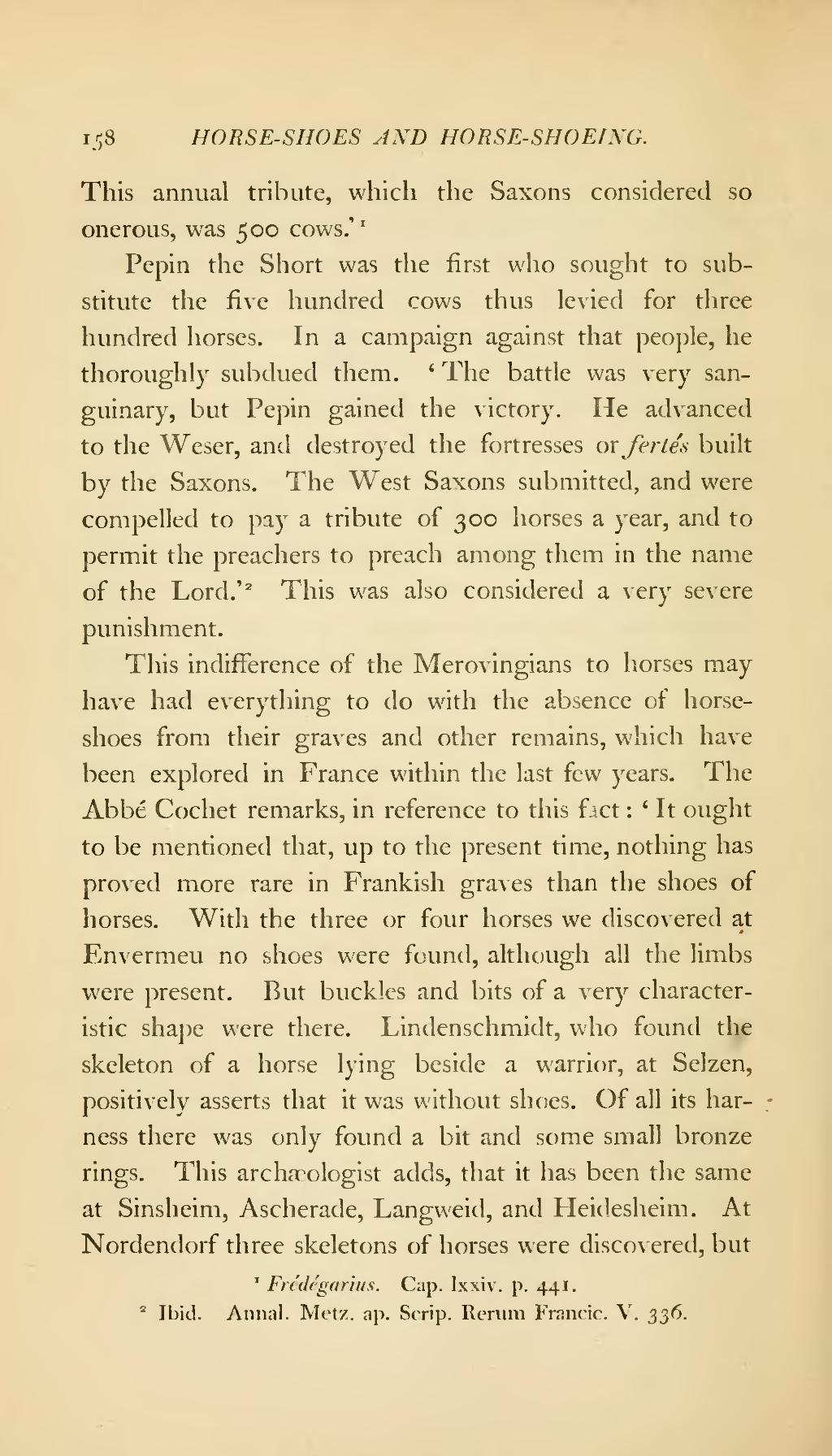This annual tribute, which the Saxons considered so onerous, was 500 cows.'[1]
Pepin the Short was the first who sought to substitute the five hundred cows thus levied for three hundred horses. In a campaign against that people, he thoroughly subdued them. 'The battle was very sanguinary, but Pepin gained the victory. He advanced to the Weser, and destroyed the fortresses or fertés built by the Saxons. The West Saxons submitted, and were compelled to pay a tribute of 300 horses a year, and to permit the preachers to preach among them in the name of the Lord.'[2] This was also considered a very severe punishment.
This indifference of the Merovingians to horses may have had everything to do with the absence of horse-shoes from their graves and other remains, which have been explored in France within the last few years. The Abbé Cochet remarks, in reference to this fact: 'It ought to be mentioned that, up to the present time, nothing has proved more rare in Frankish graves than the shoes of horses. With the three or four horses we discovered at Envermeu no shoes were found, although all the limbs were present. But buckles and bits of a very characteristic shape were there. Lindenschmidt, who found the skeleton of a horse lying beside a warrior, at Selzen, positively asserts that it was without shoes. Of all its harness there was only found a bit and some small bronze rings. This archæologist adds, that it has been the same at Sinsheim, Ascherade, Langweid, and Heidesheim. At Nordendorf three skeletons of horses were discovered, but
